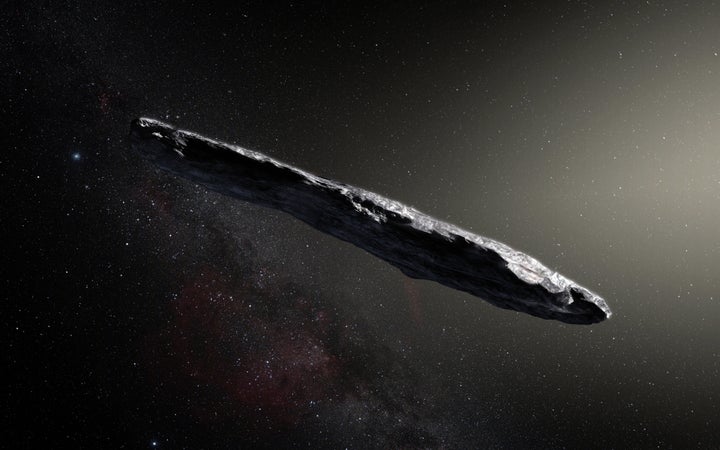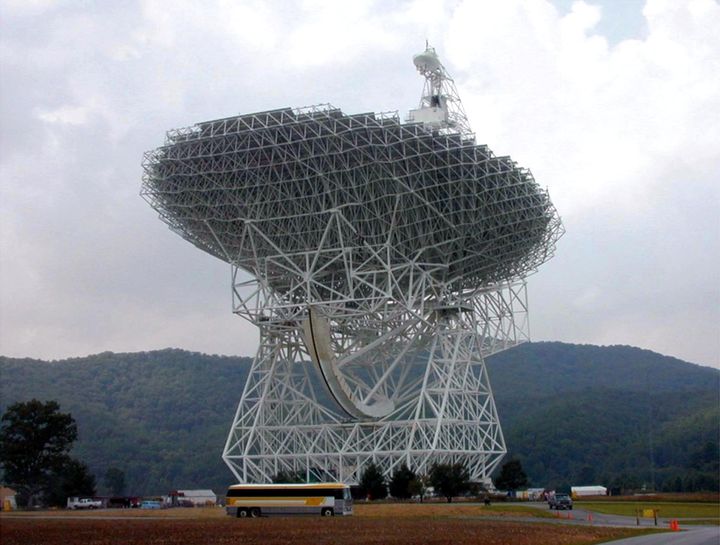A cigar-shaped interstellar object that was spotted travelling through our solar system could in fact be an alien spacecraft, suggest scientists.
The astronomers from SETI (the Search for Extra-Terrestrial Intelligence) are so serious about their theory that they will be pointing a giant telescope at the object to find out.
What is this mysterious object?
Known as “Oumuamua”, the object piqued the interests of scientists last month when it became clear that this was our first known example of an object arriving from interstellar space.

With its elongated dimensions the object is travelling at around 196,000mph and is expected to pass straight through the solar system without being drawn in by the Sun’s gravity.
What has piqued SETI’s interest of course is the shape of the object. While not unheard of, an asteroid of this shape is extremely rare. In addition to that SETI believes that its dimensions fit very neatly into what they believe extra-terrestrial vehicles could look like.
A statement from the 100 million dollar (£75 million) SETI project Breakthrough Listen, launched by Russian digital tech mogul Yuri Milner in 2015, said:
“Researchers working on long-distance space transportation have previously suggested that a cigar or needle shape is the most likely architecture for an interstellar spacecraft, since this would minimise friction and damage from interstellar gas and dust.”
How will we find out what it is?
To determine once and for all what this object actually is, the Breakthrough Listen team will point the giant Green Bank radio telescope at the object and listen our for the ‘sounds’ that it makes.

From 8pm UK time on Wednesday, December 13, the giant dish – the largest fully steerable radio telescope in the world – will “listen” to the object across four radio frequency bands spanning one to 12 gigahertz.
Within less than a minute the telescope will be able to pick up any communications equipment even something with as little power as a mobile phone.
Lead scientist Dr Andrew Siemion, director of the Berkeley Seti Research Centre in California, said:
“Oumuamua’s presence within our solar system affords Breakthrough Listen an opportunity to reach unprecedented sensitivities to possible artificial transmitters and demonstrate our ability to track nearby, fast-moving objects.
Could it really be an alien spacecraft?
SETI itself isn’t claiming that at all, they’re simply asking the question and then using their own equipment to find out for certain.
As their own statement says: “While a natural origin is more likely, there is currently no consensus on what that origin might have been, and Breakthrough Listen is well positioned to explore the possibility that Oumuamua could be an artefact.”
As renowned physicist Professor Brian Cox rightly points out on Twitter, there’s literally nothing to lose here and everything to gain.
“Although it’s highly unlikely (to say the least) that we’ll hear anything, we’d be crazy not to have a go. It’s not everyday that we get access to a visitor from interstellar space.”
One of SETI’s alternative theories is that rather than being an alien spacecraft the object could be the shard from a long-exploded planet from another solar system.
Even if it does turn out to be nothing more than a chunk of rock it’s arguably the most interesting chunk of rock you’ll see all year.
Not only is it the first example of an interstellar visitor in recorded history, but it’s an object that has been wandering through the galaxy for hundreds of thousands of years.
Preliminary calculations suggest that it may have come from the bright star Vega within the constellation of Lyra.
However, even if it been travelling at high-speed it would have taken 300,000 years for it to reach us. 300.000 years ago Vega was in a completely different place suggesting that Oumuamua may well have been wandering the universe for hundreds of millions of years before finally reaching a solar system, and in this case, ours.
Whatever it is, we should have our answer by the end of the week.
